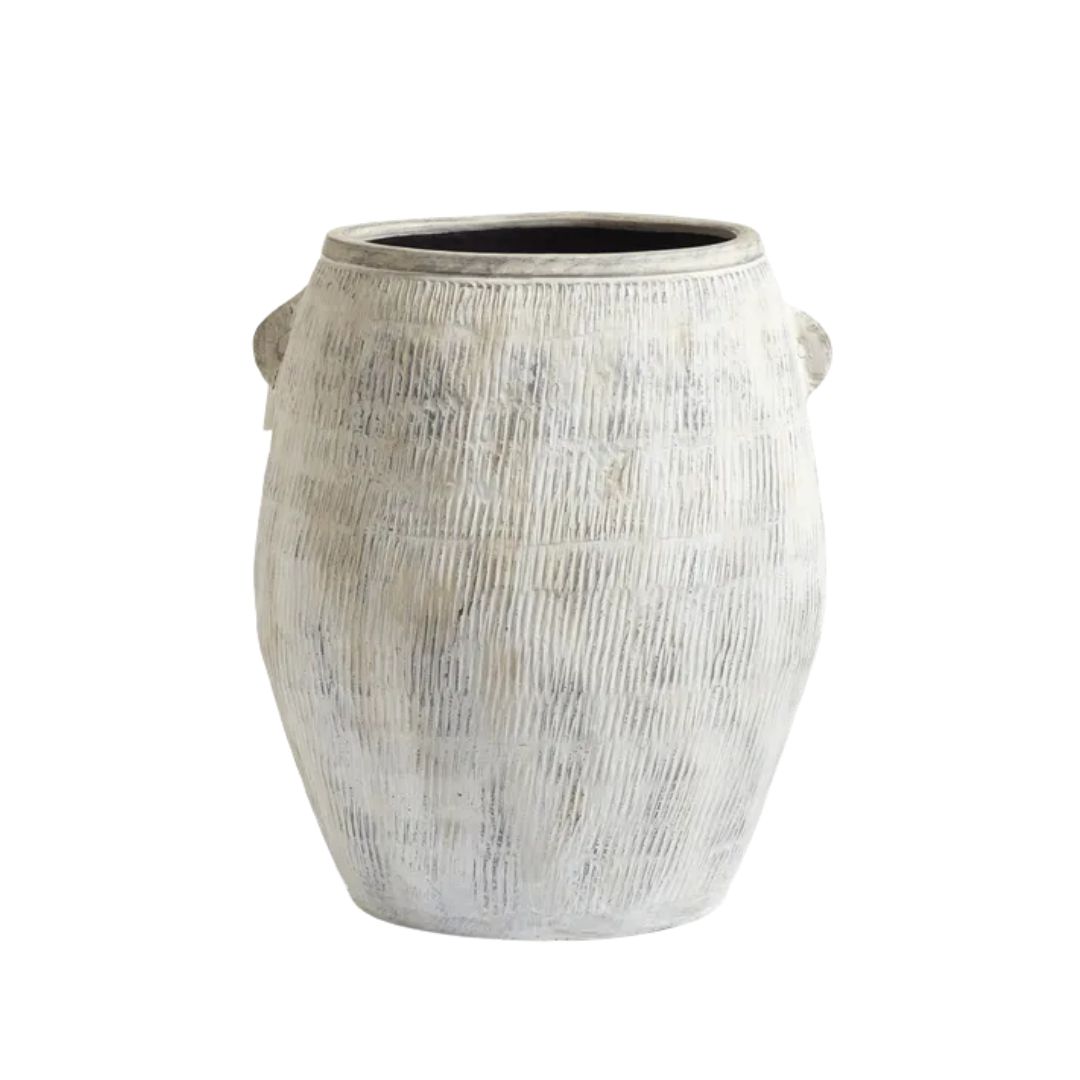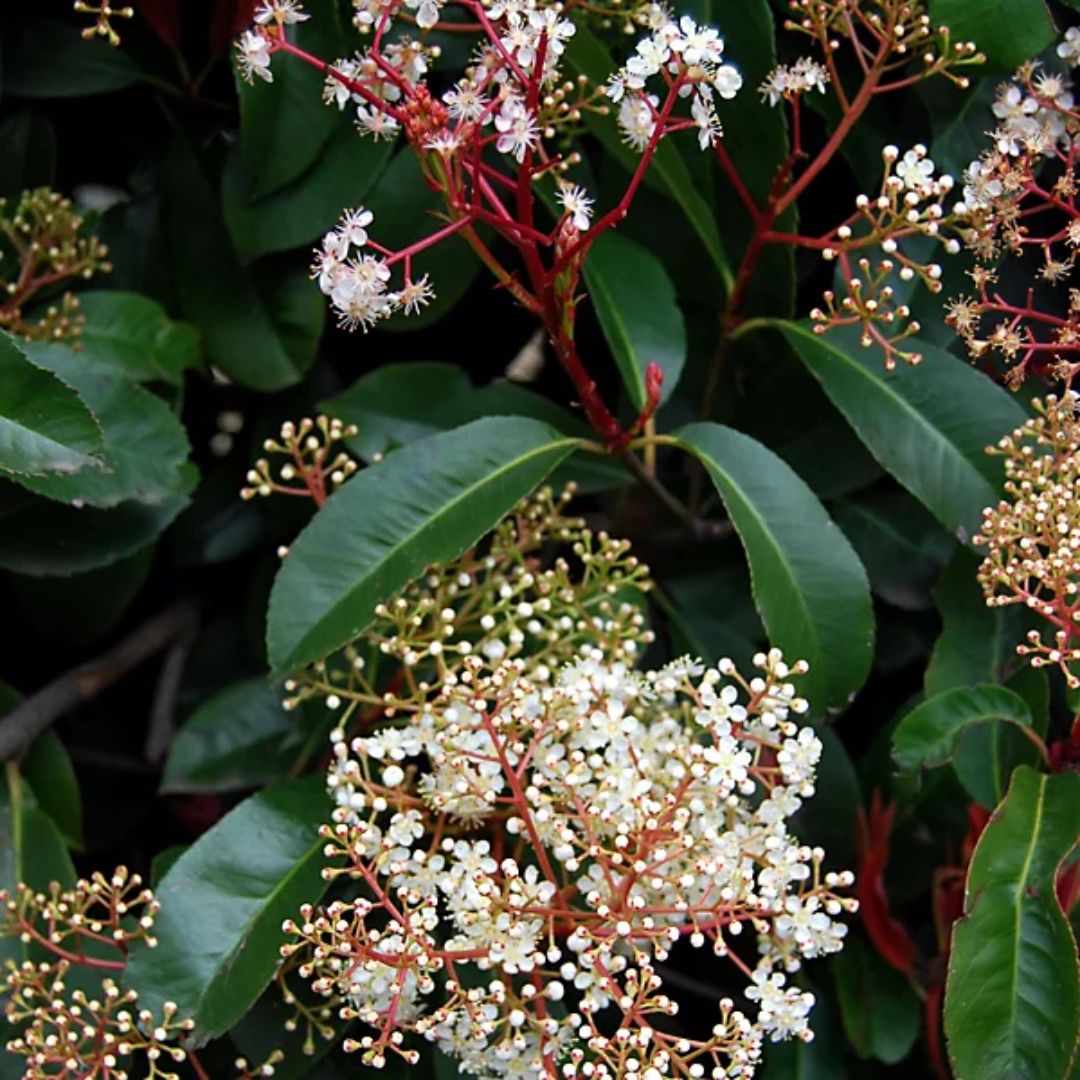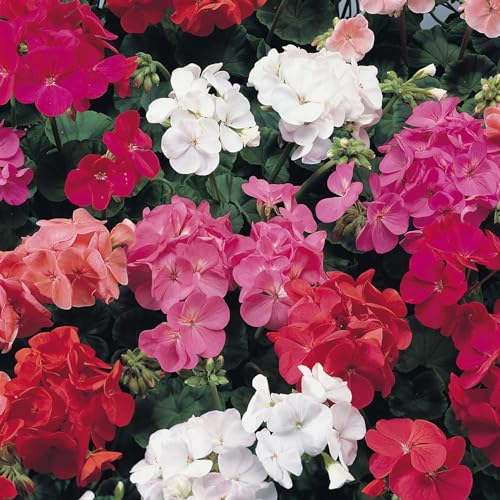How to Make a Small Garden Look Bigger — 10 Insider Tricks From Garden Designers
Discover the clever ideas and nifty tricks landscapers and garden designers use to create an illusion of more outdoor space
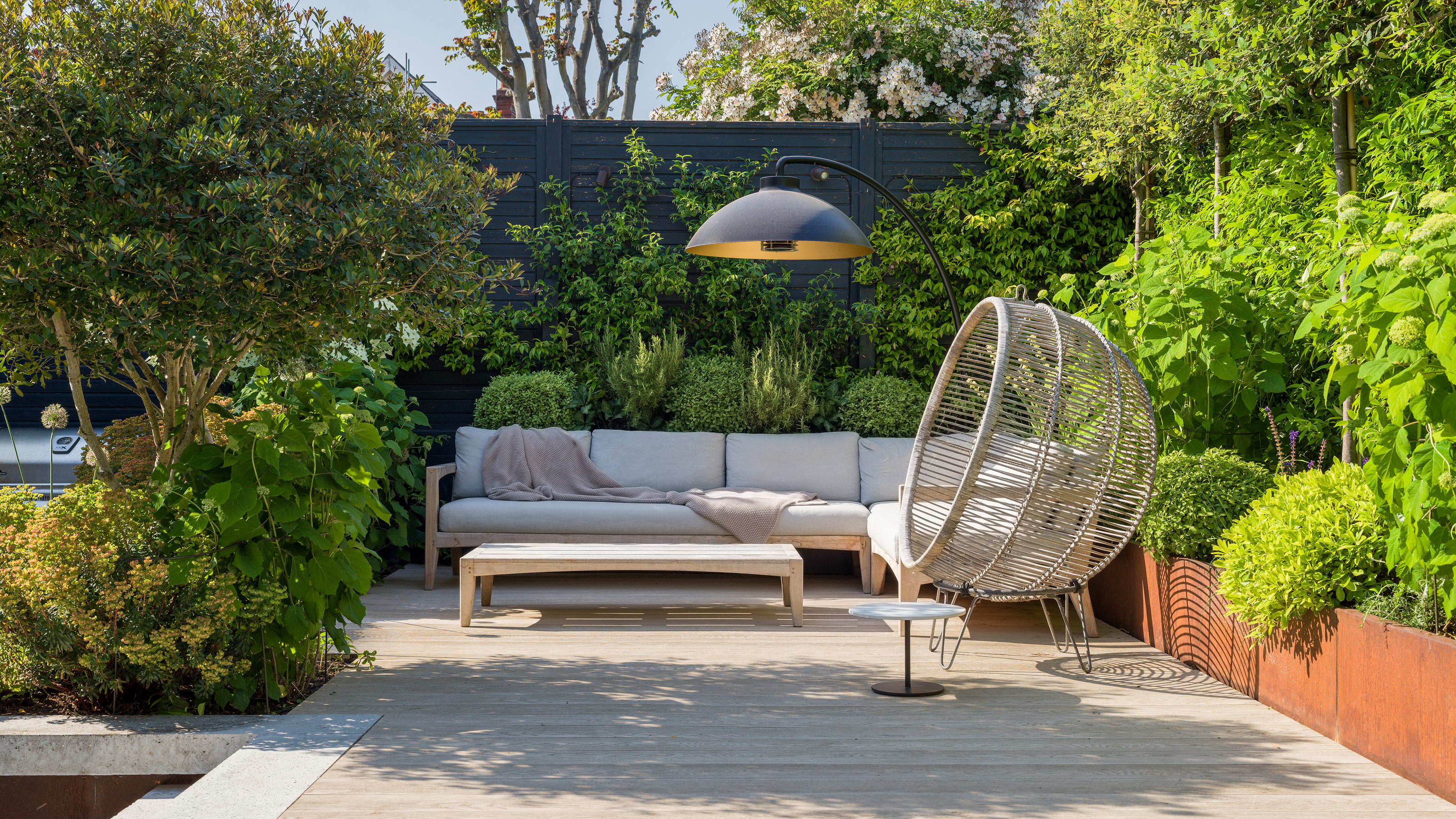
Urban living has many advantages, but one downside is the minimal (if any) outside space that accompanies our homes. Thankfully, landscapers have numerous ways to make a small garden look bigger.
Deceiving the eye is a trick that many garden (and interior) designers employ. This can give the illusion of more space, and it's simple to do in your garden, when you know how. Whether this is done through the layout, plantings, colors and materials, landscapers and designers have plenty of small garden ideas that can create the feel of a more expansive outdoor space.
Discover the creative ways that professionals utilise every inch to maximise a small garden and make it look and feel larger than it is. Whichever ideas you choose, they are bound to increase your enjoyment of spending time outside in your garden.
1. Go for Multi-Tiered Planting
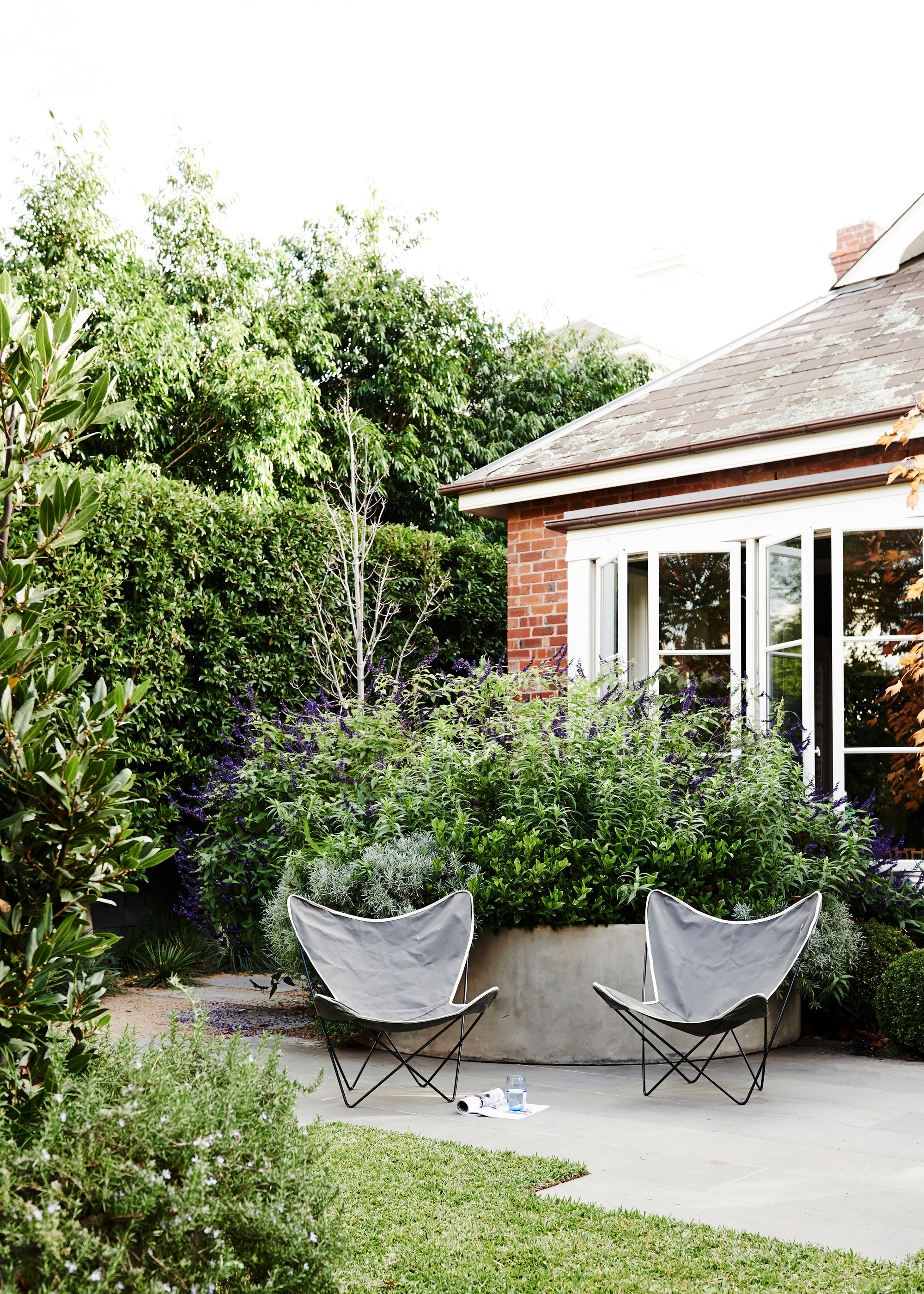
Tiered planting adds more dimension to this garden.
In a small garden it's important to use more than just the floor space, if you want to make it look bigger. Making the most of wall space, and adding raised beds and planters at different levels will create more height, depth and a feeling of fullness, which will make the space feel lush and seem larger than it is.
"I like using a combination of raised beds, tiered planters, or hanging baskets to create a natural gradient of planting from low ground cover to shrubs and trees," says New York-based landscape gardener, Kat Aul Cervoni, founder, Staghorn Living. "I’m also careful to have plantings placed in the foreground and background to help give more dimension to the space. Avoid putting everything against the back wall (if possible)."
If you want to add depth and dimension to your space, we love these Mkouo Macrame Plant Hangers from Amazon. You can also mix things up by adding a planter next to it — these Marford Hexagonal Set of Three Planters from Dunelm should do the trick.
Tony Woods, founder and MD, Garden Club London agrees and says, "Subtle changes in the height of planters, materials and planting will help to create layers of interest and create a visual journey through the space rather than immediately directing your eye to the end of the garden,' he says.. "Transparent planting such as grasses and meadow type flowers are great at easily adding to this effect."
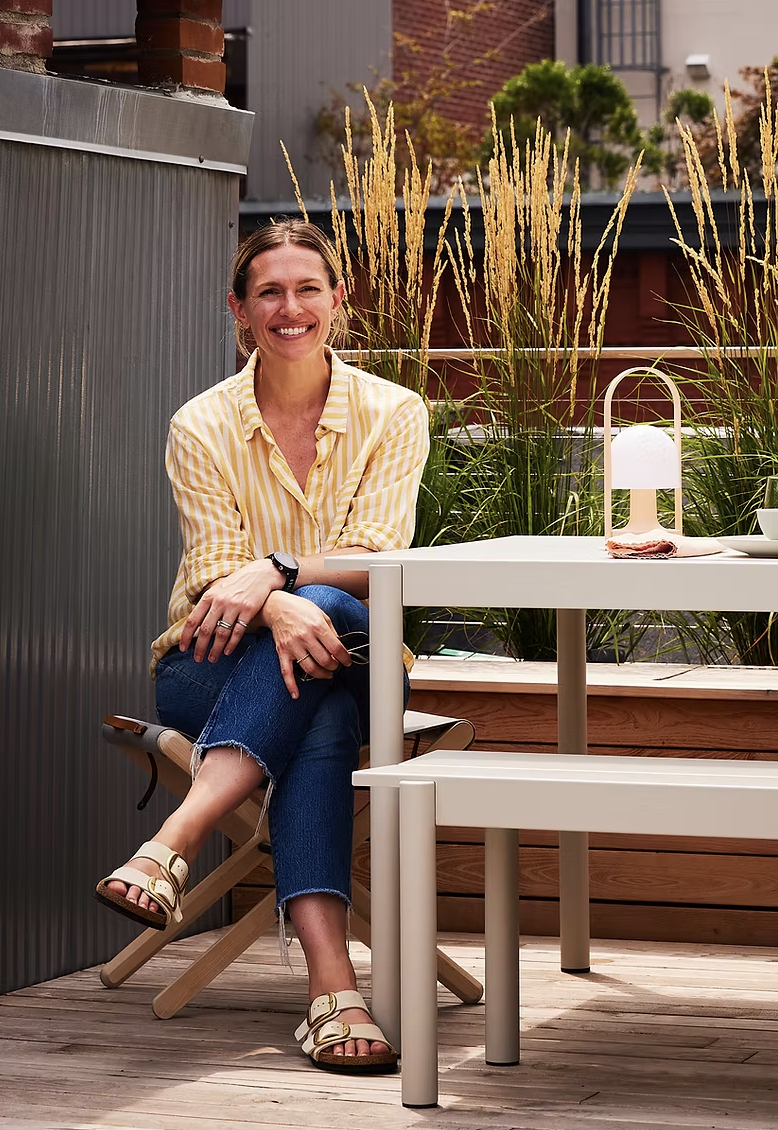
Landscape designer, Katherine "Kat" Aul Cervoni is the founder and principal of Staghorn Living. Kat creates outdoor spaces that become natural extensions of a home’s interior. A member of the Ecological Landscape Alliance and the Association of Professional Landscape Designers, she also mentors young plant enthusiasts and upcoming designers.
2. Keep the Color Palette Simple
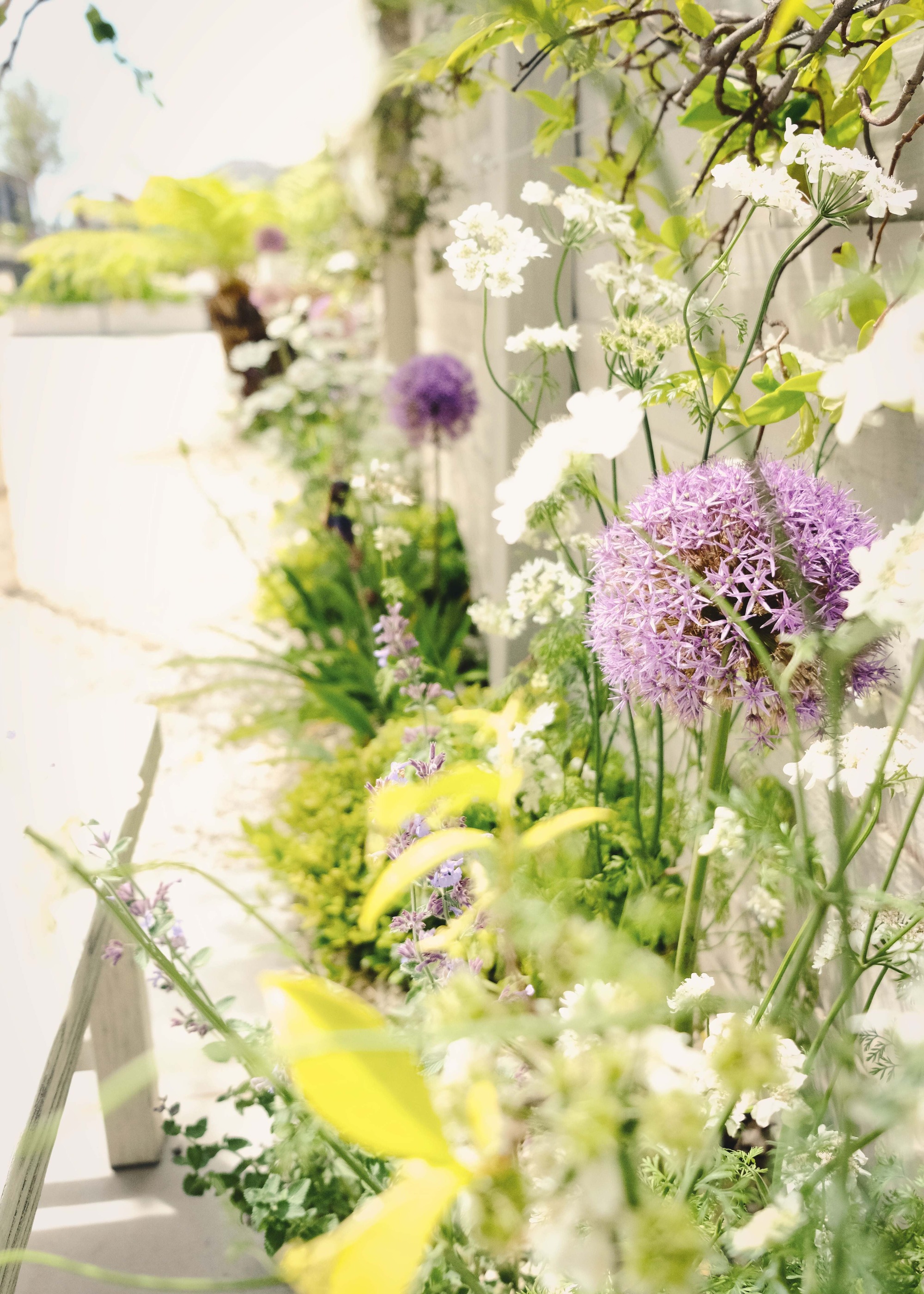
A minimal color palette feels calming and less cluttered.
A modern garden planted with a limited color palette not only looks calming and chic, it can give the illusion of more space too. Much like a small room decorated in a riot of different hues and patterns can look crowded, while one with a simpler palette appears more spacious, so it is in the garden.
"A small garden is a good opportunity to try the 'all shades of green' look with an emphasis more on texture," says Kat. "If you want some flowers, stick with one or two other colors (think combos like white and purple, light purple and blue, or just white). Too many colors gets into that visual clutter realm and that’s what makes a space feel smaller."
3. Choose Large Pavers for Patios and Paths
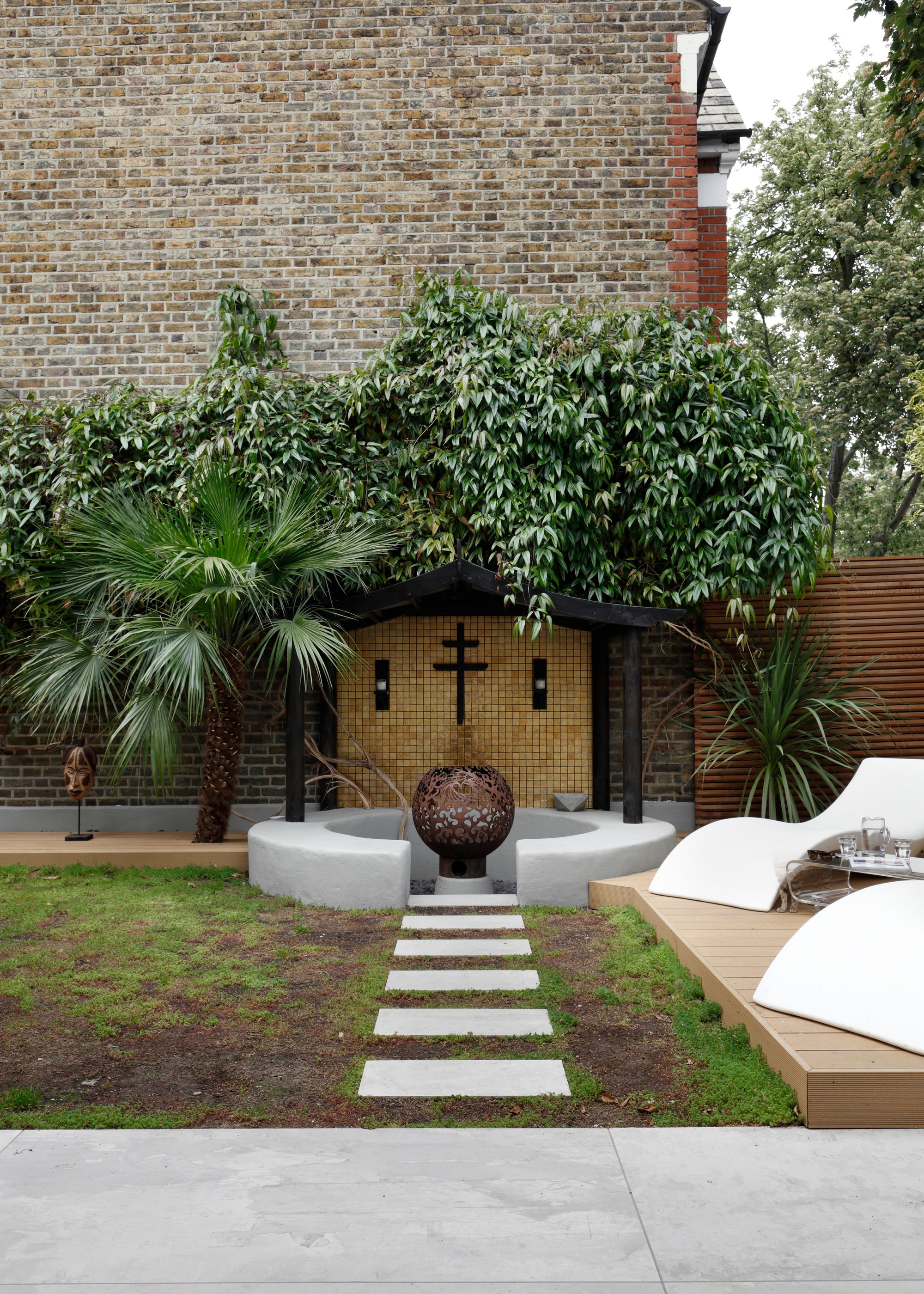
Large pavers create a cleaner look.
Another modern interior design 'rule' that comes into play in the garden is large-scale pavers. In the same way that mosaic tiles with lots of grid lines and grouting can make a small bathroom feel even smaller, while large format tiles make it feel larger. It's the same deal with the pavers you choose for a terrace, patio, or pathway in your yard. You can opt for single paving slabs like these Pietra Di Vals Grey Porcelain Paving Tiles from B&Q.
"I’m a big fan of using large format pavers (e.g., 2’ x 3’ pavers) for smaller spaces to help reduce visual clutter," says Kat. "Keeping hardscaping on the simpler, cleaner side will help the space feel larger. Laying large pavers on a diagonal can also help lengthen sight lines."

Tony Woods is the founder of Garden Club London and an RHS Chelsea Flower Show Gold medal winner, author and passionate horticulturist. Tony creates garden design concepts and develops planting schemes with an expert eye for detail. He is a fully registered member of the Society of Garden Designers and accredited BALI Designer.
4. Create a Cohesive Boundary
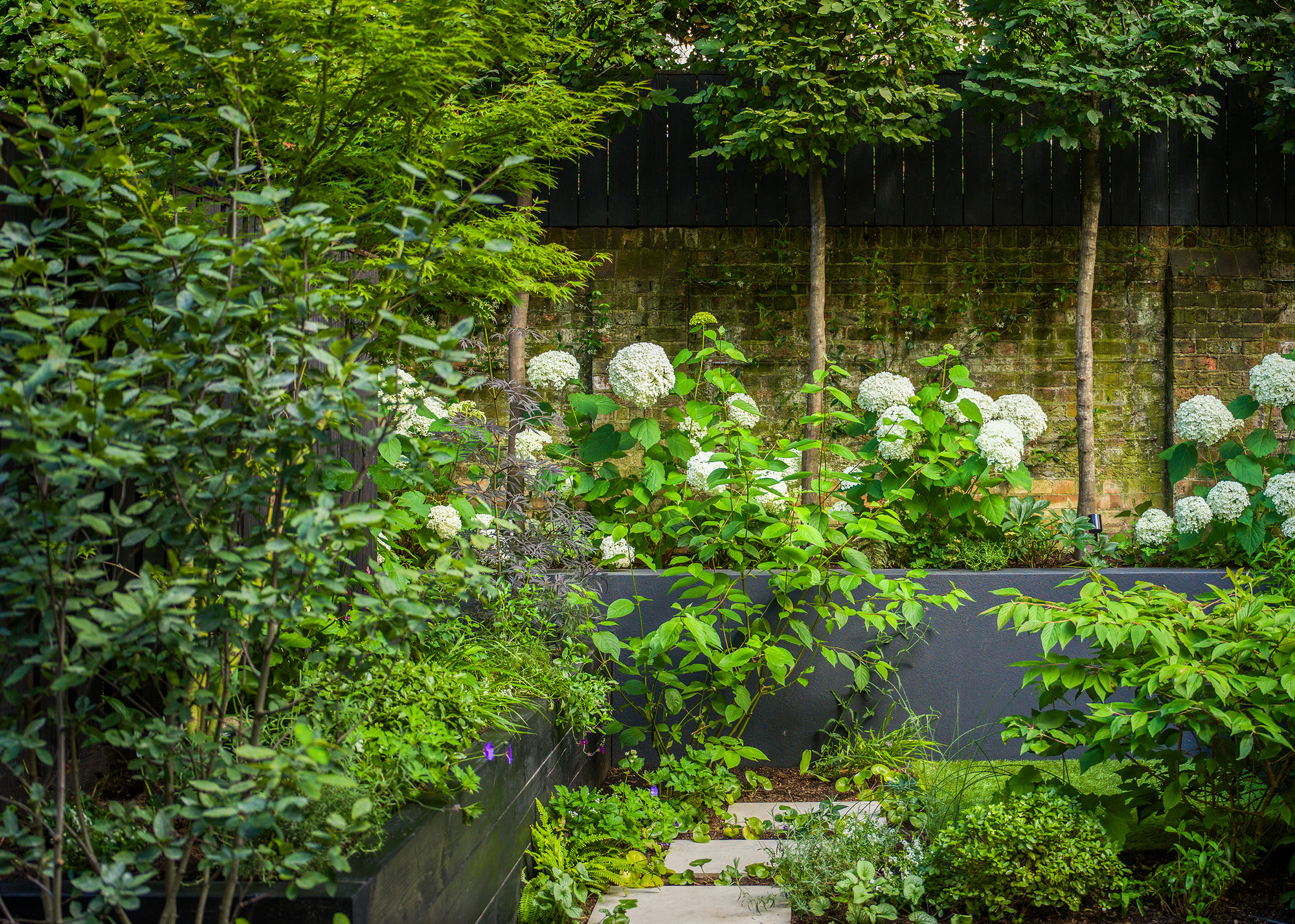
Consistency is key!
Those who live in a city or suburb are often surrounded by varying wall or fence ideas from neighbors on either side and often at the back of a property too. This can lead to a mix of different boundary materials, styles and tones around your backyard. Apart from looking messy, it can make a garden feel less spacious. Ideally, install your own fence or wall, so that it is the same style on all sides for a cleaner, more cohesive look.
"Ensure that no matter what material they are made from, the tone or color of all boundaries is consistent," says Tony. "Having lots of different types of fence panels, sections of wall, etc, immediately makes the space feel cluttered and overwhelms the eye. Painting is the easiest and most cost-effective solution and easily helps set the vibe for the space."
Obviously, if the fence doesn't belong to you, you will need to speak with whichever neighbor owns it before you paint or change it, even if it is on your property side.
5. Go for Dark or Muted Fence Colors
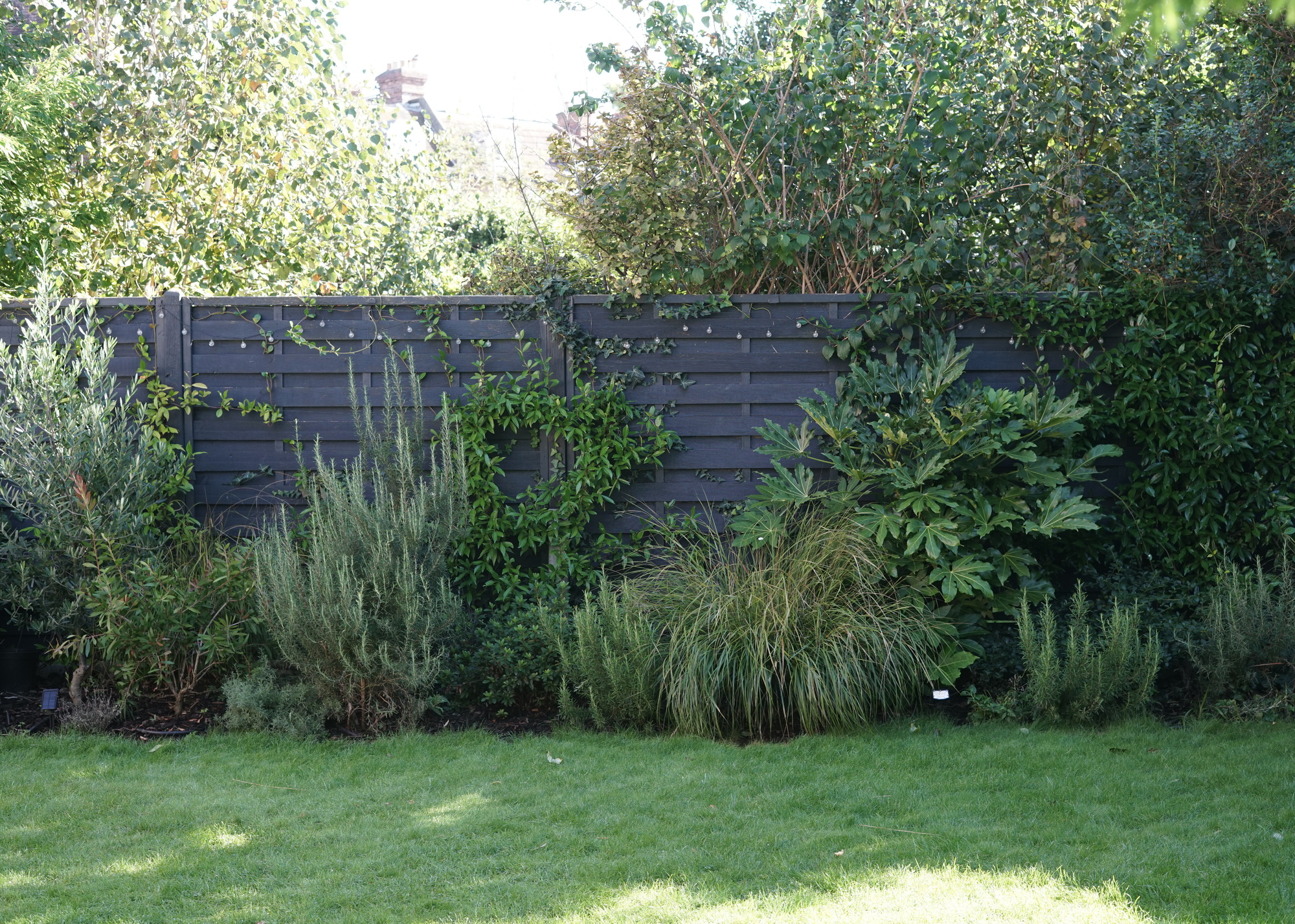
Alex Hollingsworth at Dig is also a fan of dark fence colors.
Whether you opt to install new garden fencing, or paint or stain existing panels, the color can impact how large or small the space feels. In a small garden, many modern garden designers like to use dark or muted tones on boundary walls and fences.
"Opting for a darker fence or wall color such as black, charcoal gray, or dark green will help them recede into the background making the space feel larger," explains Kat. "These colors are also good foils for plantings to help them pop in the space.
"As a second choice if dark colors aren’t an option, go with other soft muted neutral colors like gray, green or taupe which will blend with the plantings but avoid white.
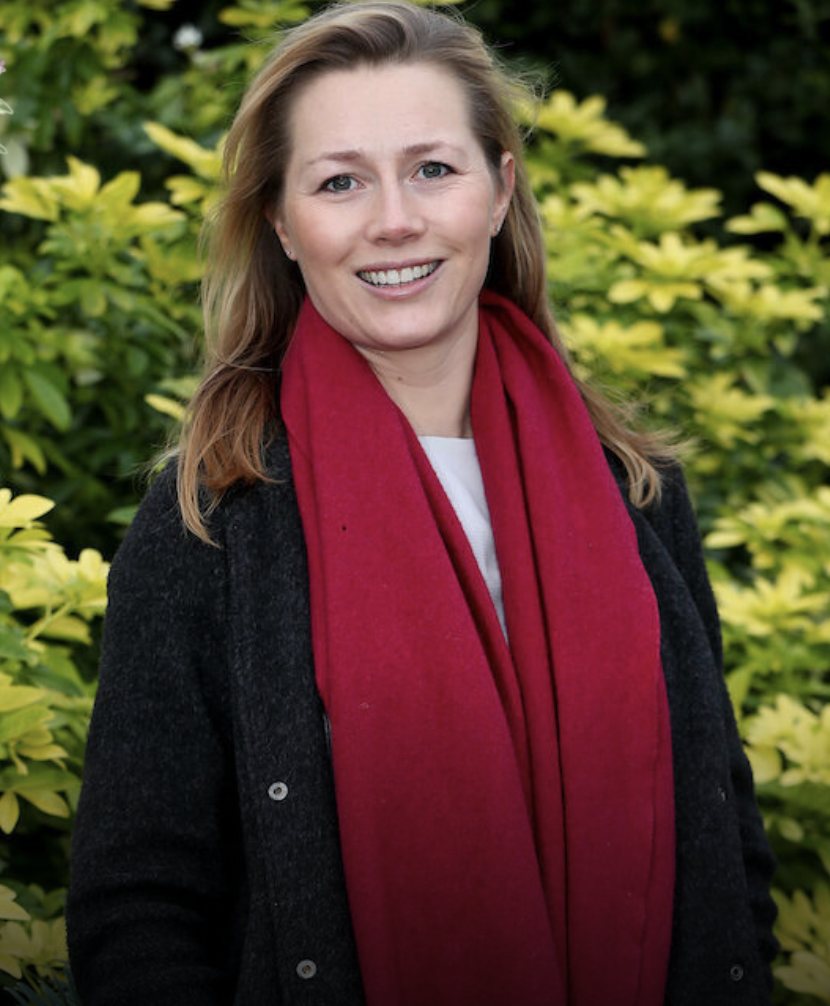
Alex, a Dig co-founder, grew up in the English countryside, surrounded by beautiful gardens and keen gardeners. She gained a Distinction in her Post-Graduate Diploma in Garden Design, and also holds an RHS Level 2 Certificate in Horticulture. After working for Mazzullo + Russell, a leading London design practice, Alex ran her own successful practice, before joining the founding team at Dig.
6. Disguise Fences and Walls With Plants
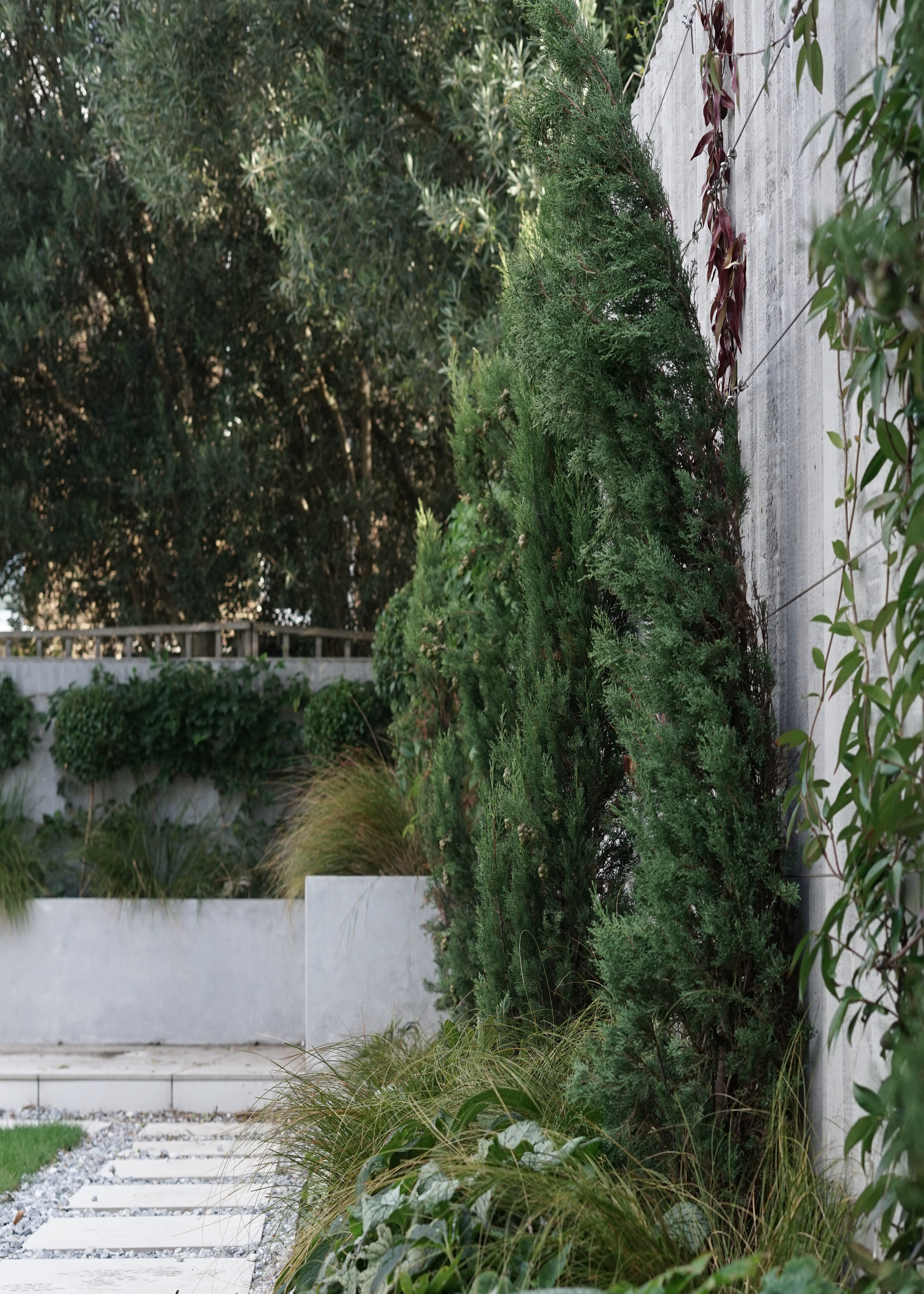
This designer likes to disguise a wall with a row of Cupressus trees and we're here for it.
If space is very limited, or your budget is tight, it may not be viable to install a new fence around your boundary. For those who have to tolerate a patchwork of different garden fencing ideas from neighbors, hiding them with greenery is the best course of action.
As well as looking better, it will make your garden appear larger. The best plants to cover a fence will vary according to where you live, but there are some classic vines, blooms and trees that work well. (If you don't own the fence, you may need permission to grow climbing plants over it, so do check first). If this is the case choose plants and trees to grow in front of it.
"Plants like climbing hydrangea, clematis, or evergreen ivy soften walls and fences while adding depth," says Kat. "Bonus points for covering ugly walls or fences that otherwise might not be possible to hide or amend."
"Pleached trees along a boundary (these resemble hedges on stilts) are a time-honoured way of adding greenery without too much mass," adds Alexandra Hollingsworth, co-founder of Dig Club. "However, there are other fun shapes that can be used, such as parasol forms to create a living pergola, or a row of Cupressus. These are a personal favourite as they are both quite formal, but also more playful and relaxing to look at as they are in their original intended form, rather than on a frame."
7. Find a Good Spot for a Tree

A well-place tree will provide dimension and shade in your yard.
In a small backyard, you may feel reluctant to plant a tree, due to the space restraints. However, this may not be a wise decision. According to Kat, a well-placed tree can actually enhance the feeling of space. It can also provide much-needed shade.
Obviously, choose an area where your tree and its roots will have space to grow, without blocking light in your or your neighbors' homes.
"It may seem counterintuitive, but having one larger tree, especially something tall can make the space feel larger as it makes your eyes travel upward," says Kat. "Much like layering and multi-tiered planting, this tricks the eye into thinking the space is deeper and larger than it actually is."
"Choosing a trees that attracts birds can help too," adds landscape designer, Jon Fargion, founder of Jon Fargion Design. "The pleasant sound of bird song makes you feel that you are immersed in nature, rather than a small confined garden in a city."

Jonathan grew up in Milan, where he got an MA in environmental architecture from Politecnico di Milano. His academic and professional experiences took him from Italy to Israel, and Hong Kong to Lisbon, ending up in New York. He has a specialization in ornamental horticulture from the New York Botanical Garden, and designs outdoor spaces, whether urban, countryside, or coastal. He has spoken at NYU Casa Italiana, the New York Botanical Garden, and Montclair University to share his experience, and give talks about ecology and gardens.
8. Integrate a Seating Area into the Planting Design
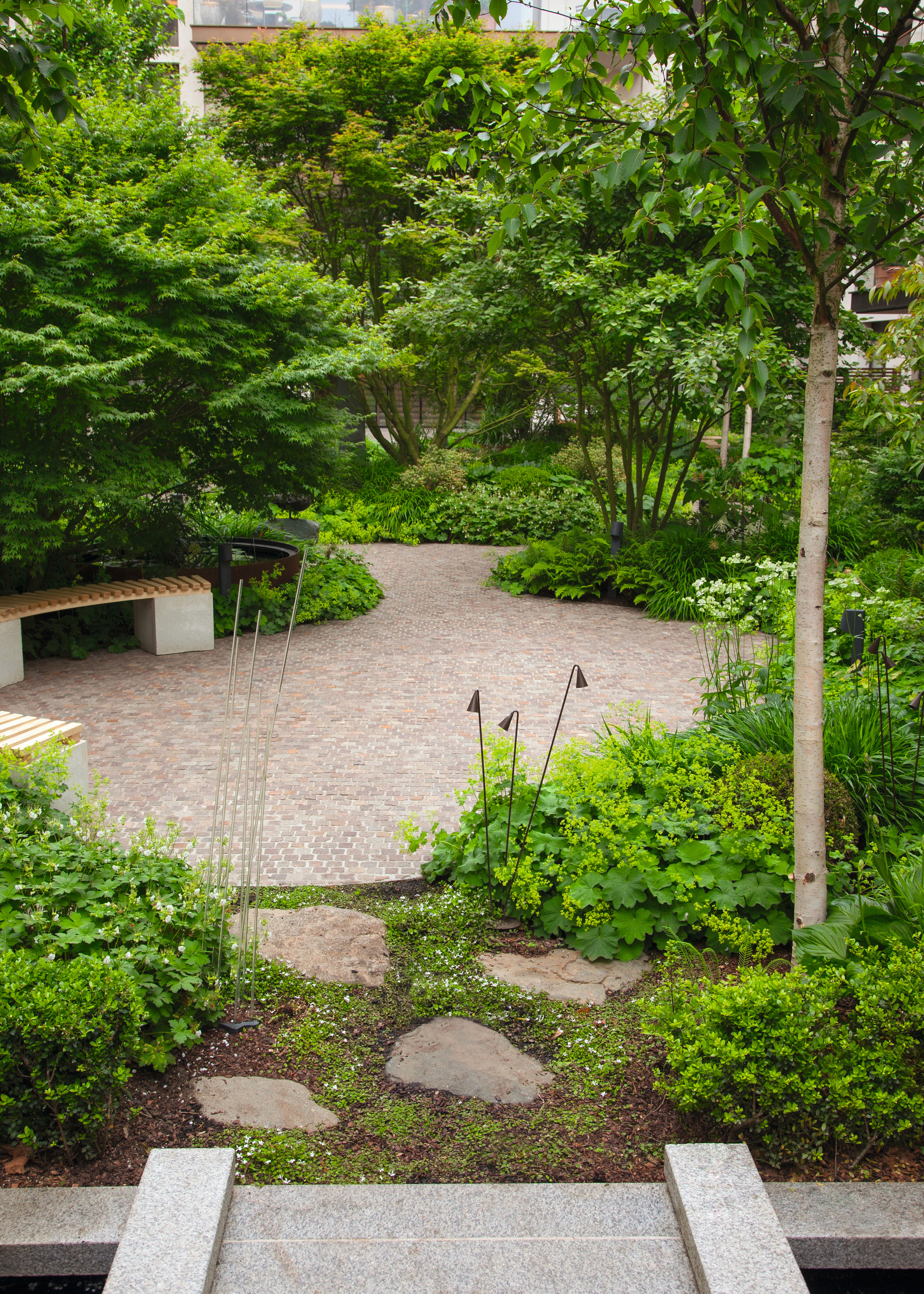
Move furniture and foliage closer together for more privacy.
In a small garden, it's often the habit to section off a space for seating, either on a patio near the property or in a sunny spot. This can work well on a practical level, however, it can create an obvious division between the seating area and green space, so both can look small and cramped. Garden designer, Alex Hollingsworth, co-founder, Dig Club suggests integrating the two, so there is less distinction between the different areas for a larger, fuller feel.
"A way to enable a lot of planting in a small garden is to make the seating area part of the planting," says Alex. "Building two tier raised beds, where the back tier functions as the back of the seat, and the front tier functions as the seat itself, gives planting at nose and eye level when sitting down in the garden.
"Plants can grow up from the beds, but also trail down the fronts of the beds, hugely increasing the amount of greenery in a space."
"If you have the opportunity to build in a bench with a fence, wall or raised planter, this can be a great space-saver and leave more of the footprint open," agrees Kat. "For the furniture, stay clear of oversized pieces or options with large, chunkier framing as this can feel out of scale."
Tony Woods suggests creating a centralised seating space as another option, for the same reasons. "Taking the seating structure away from the boundary allows the space to flow better and enables you to add privacy and intimacy with planting around the seating space," says Tony.
9. Bring the Planting in
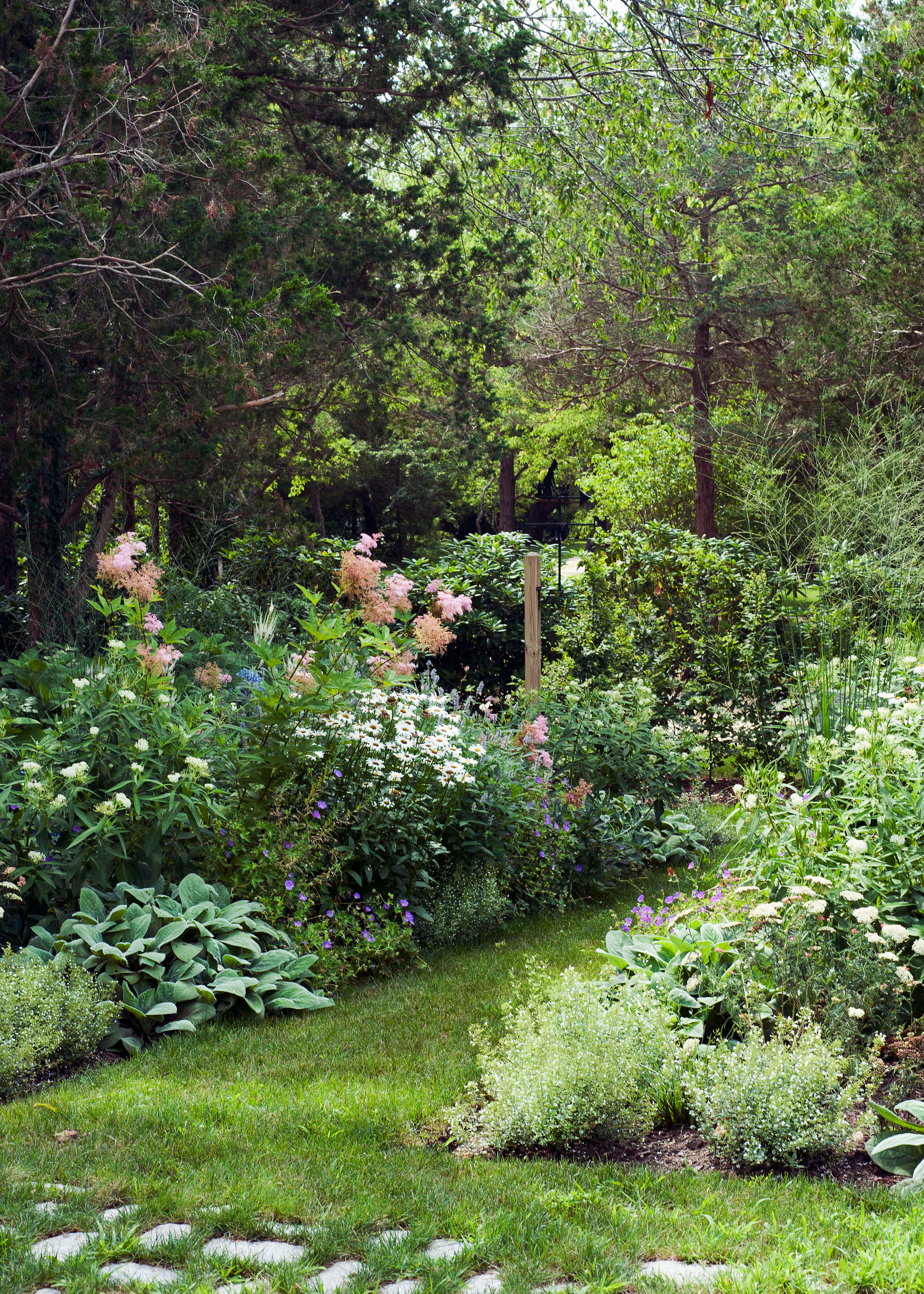
Go for more plants, less lawn for a larger, wilder feel.
In small gardens, there is a tendency for people to plant around the edges, with skinny flower beds, and an expanse of lawn in the middle. Not only does this look drab and dated, as many people are now opting for grass alternatives, it makes a compact space feel smaller. As with using layers, bringing planting into other areas of the garden, can expand the feeling of space. Alex explains why this is, along with some space-enhancing options.
"Many small gardens have narrow strips of border around the perimeter, with the intention to maximise the lawn space," says Alex. "However, this actually foreshortens the space as there’s nothing in the foreground on which to focus.
"Bringing planting into the foreground, and placing it horizontally across the garden gives the garden layers, and increases the sense of space, even if it feels counter-intuitive. Planting right up against the house is lovely, especially if there are long windows.
"Also, planting across the garden, to break up two zones, such as a seating area and a lawn, is very effective too, especially if tall, airy plants such as Gaura, or Miscanthus are used, as these create a semi-transparent veil."
"Layering planting materials so they never reveal the end of the garden can be a good strategy," says Jon. "So you're creating areas within the garden by delineating them with plants. This way your sight can never reach the confines of the garden and thus make the perception of a bigger garden."
10. Plant Flowers With a Cool Color Palette on the Back Boundary
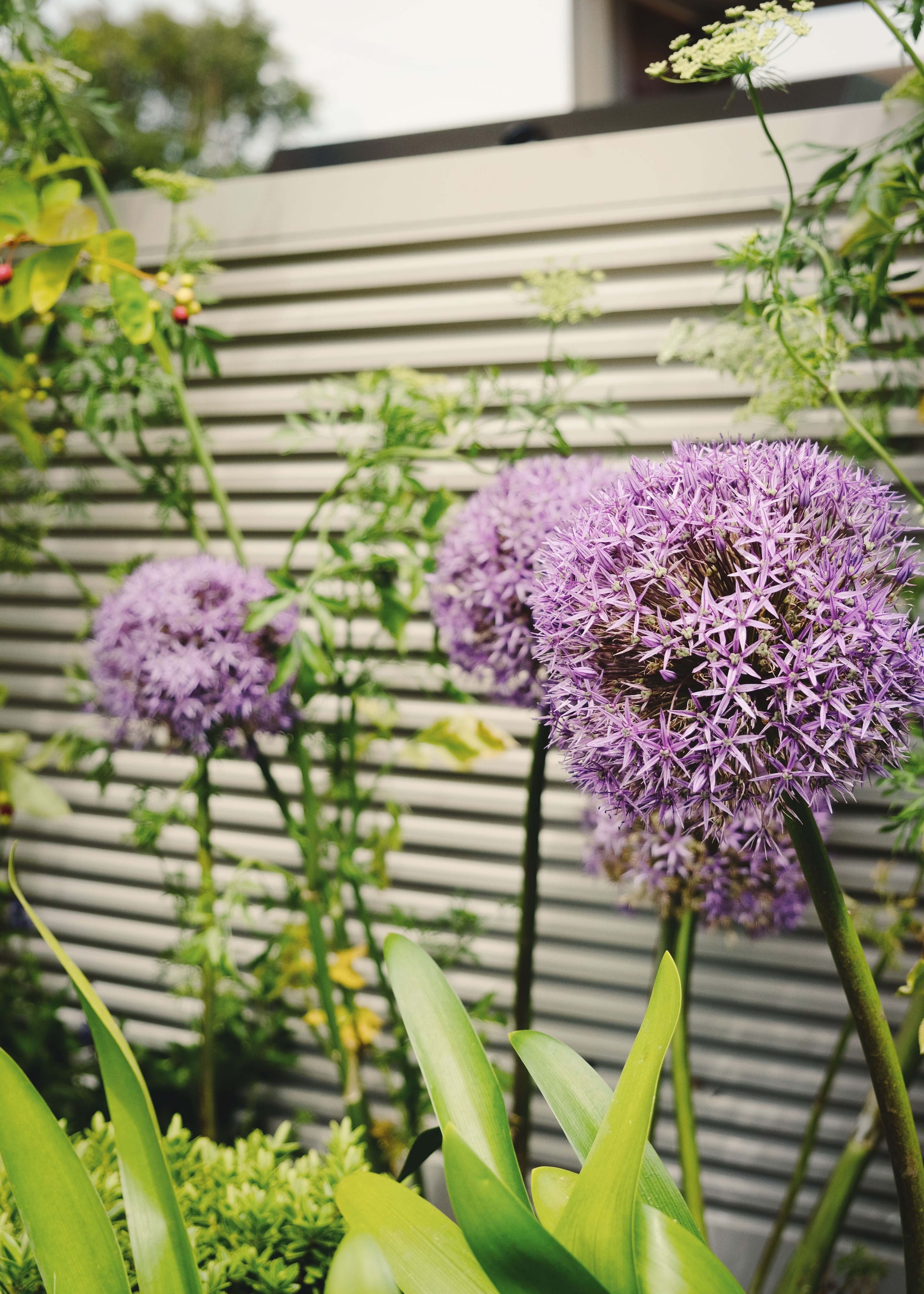
Cooler colors will make the back boundary feel further away.
As we've already outlined, keeping the color palette in a small garden limited, rather than riotous, can enhance a feeling of expansion. The choice of hues and where they are located will impact how the space feels too. Alex is a huge fan of planting flowers with a cool color palette along a rear boundary wall for its space-enhancing effects.
"Hot colours jump towards us, and cool colours recede away from us, so planting cool colours like greys, whites, lilacs and silver blues at the back boundary of a garden really does give a calming sense of space," explains Alex.
"Often a small garden might be shady at the back, and often people have a tendency to plant large red flowering camellia bushes — these are gorgeous plants, but they are quite a forceful presence in a small space," Alex continues. "Instead, small-leaved and small-flowered plants such as Geranium ‘Mrs Kendall Clark’, Thalictrum ’Splendide White’, Eleagnus ‘Quicksilver’, Caryopteris clandonensis 'Sterling Silver' and Brunnera ‘Mister Morse’ often work well at the back of a small garden (depending on the aspect)."
FAQs
What Colors Make a Small Garden Look Bigger?
According to garden designers, cool and muted tones can make a small garden feel bigger. When it comes to choosing a fence color for a small garden, Kat Aul Cervoni suggests black, charcoal gray, or dark green, as these tones will recede into the background. Alternatively, soft muted neutral colors like gray, green, or taupe will blend with the plantings.
With regard to flower colors, as Alex Hollingsworth explains above, cool tones, such as greys, whites, lilacs and silver blues, recede away from us and create a sense of calm.
Whether you choose to enhance your hardscaping, layout or make changes with plants and trees, using just some of these small garden ideas will make your outside space feel larger and more lush — and ultimately more enjoyable.
Be The First To Know
The Livingetc newsletters are your inside source for what’s shaping interiors now - and what’s next. Discover trend forecasts, smart style ideas, and curated shopping inspiration that brings design to life. Subscribe today and stay ahead of the curve.
Jacky Parker is a London-based freelance journalist and content creator, specialising in interiors, travel and food. From buying guides and real home case studies to shopping and news pages, she produces a wide range of features for national magazines and SEO content for websites
A long-time contributor to Livingetc, as a member of the team, she regularly reports on the latest trends, speaking to experts and discovering the latest tips. Jacky has also written for other publications such as Homes and Gardens, Ideal Home, Red, Grand Designs, Sunday Times Style and AD, Country Homes and Interiors and ELLE Decoration.
-
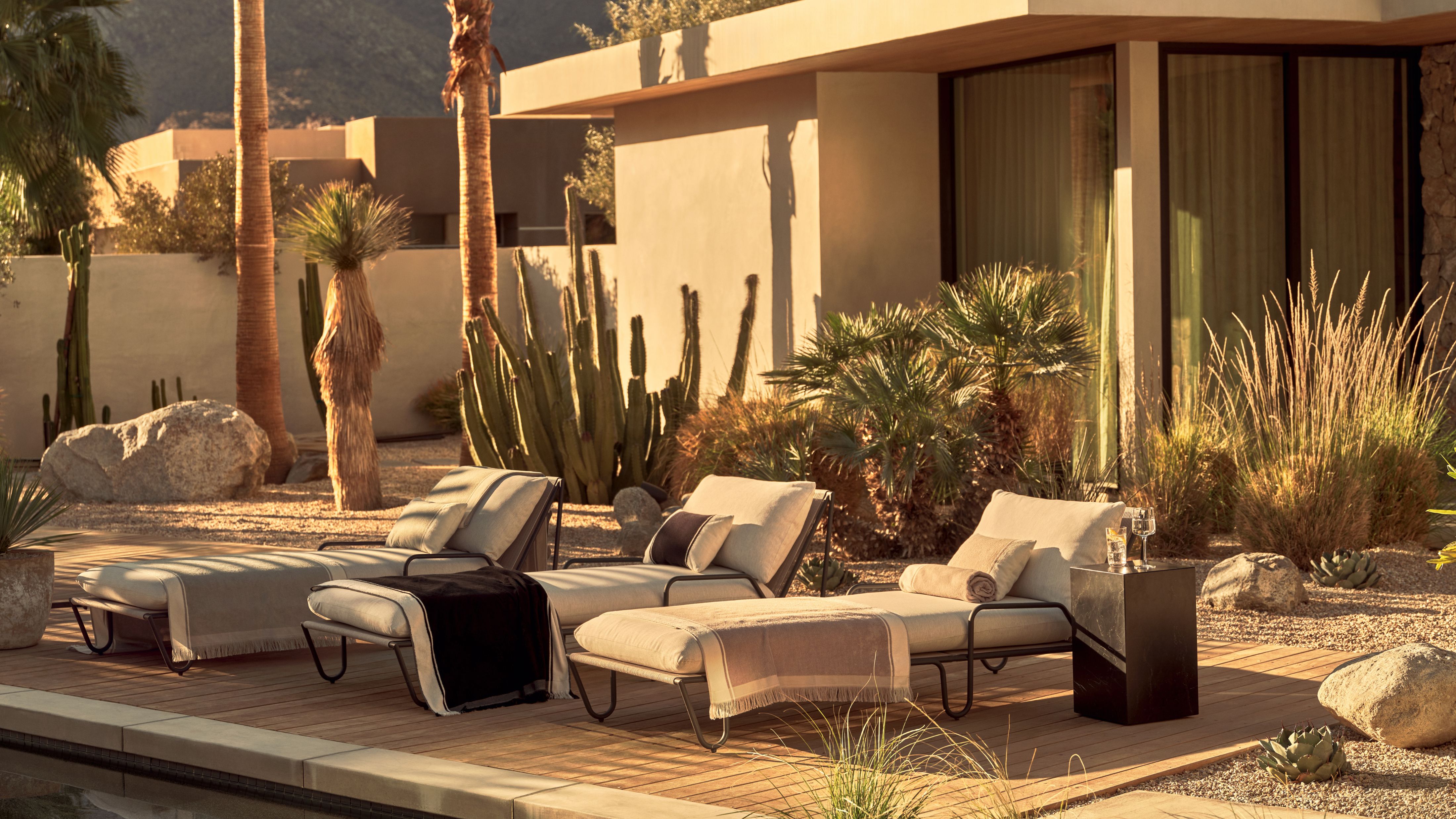 Slub Weaves and Silver Sardines — H&M Home Makes a Case for a Summer Edit That Doesn’t Take Itself Too Seriously
Slub Weaves and Silver Sardines — H&M Home Makes a Case for a Summer Edit That Doesn’t Take Itself Too SeriouslySomehow, they’re both having a moment — and H&M Home knows exactly what to do
By Julia Demer
-
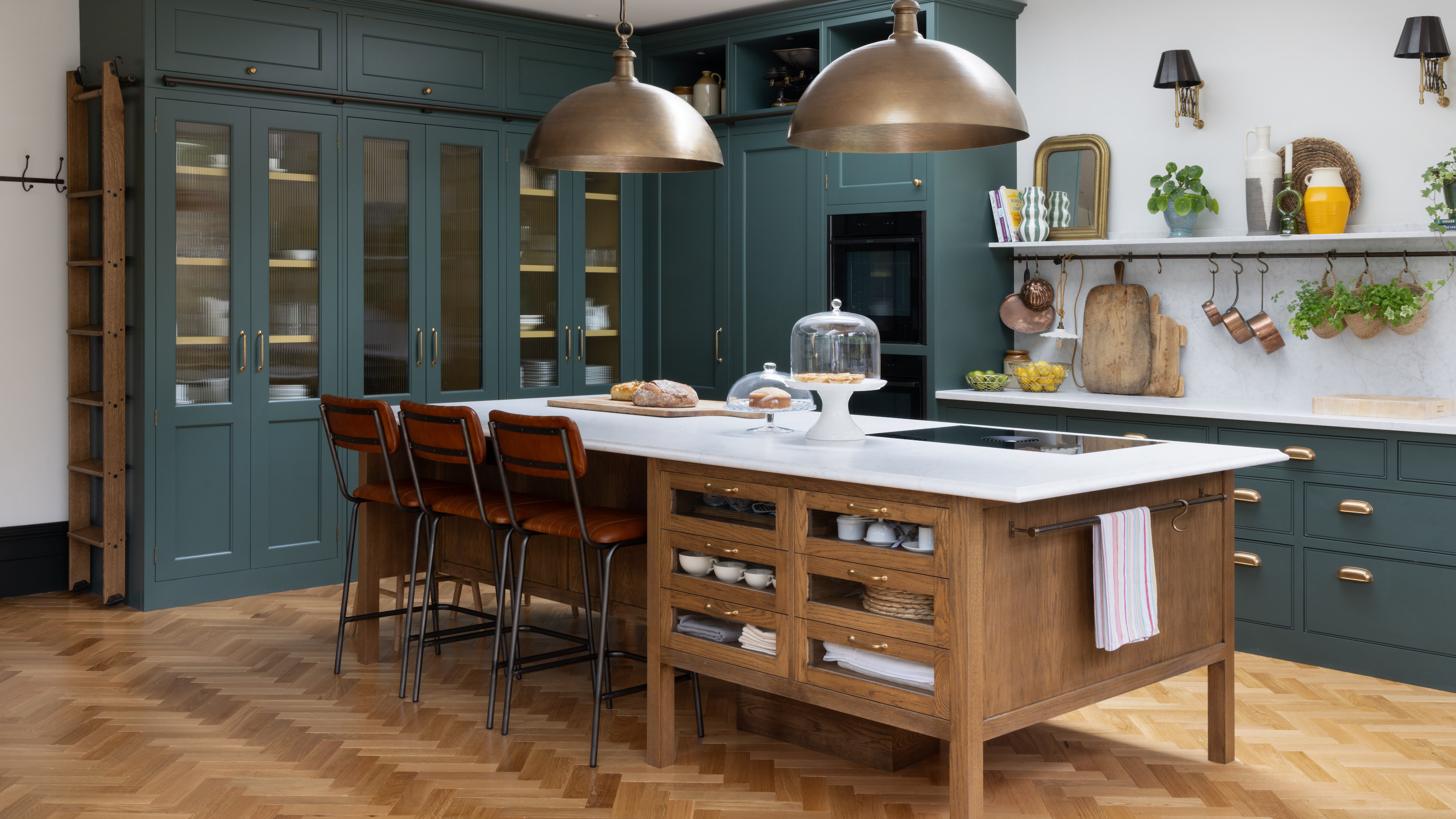 10 Ladder Kitchen Cabinet Ideas That Make the Most of High Storage and Make Your Scheme Feel Classy
10 Ladder Kitchen Cabinet Ideas That Make the Most of High Storage and Make Your Scheme Feel ClassyRail ladders in a kitchen have a sort of elegance to them that's hard to ignore, but they're also practical for storage, too
By Linda Clayton
